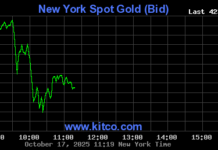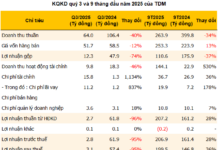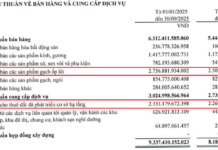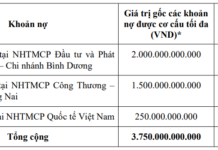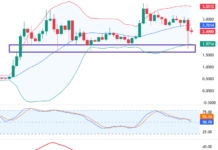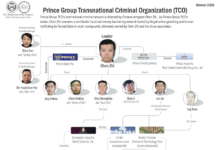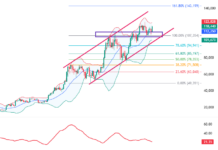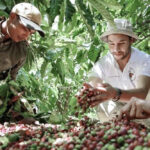Speaking to the press about the veterinary sector’s performance in 2024 and key plans for 2025, Mr. Nguyen Van Long, Director of the Department of Animal Health (Ministry of Agriculture and Rural Development), shared that in 2024, the veterinary sector effectively controlled various livestock and poultry diseases nationwide. This facilitated a 5.2-5.5% growth in livestock farming compared to 2023.
Could you provide an overview of the animal disease situation and veterinary work in 2024?
Despite being one of the few sectors in agriculture and fisheries criticized for significant imports, Vietnam’s livestock farming industry boasts a substantial production value. According to Deputy Minister Phung Duc Tien, the total value of the livestock farming industry amounts to approximately 33 billion USD annually. However, this still falls short of meeting the demands of a population of 100 million.
Diseases remain a significant factor undermining the competitiveness of the livestock farming industry. In light of this, in 2024, the veterinary sector continued to successfully control numerous livestock and poultry diseases nationwide, fostering the development of livestock farming. This resulted in a 5.2-5.5% increase in production value, ensuring a stable supply of food for consumption.
Specifically, in 2024, the number of avian flu outbreaks decreased by 23.8%, and the number of outbreaks of PRRS (Porcine Reproductive and Respiratory Syndrome) dropped by 60%. However, several dangerous diseases showed an upward trend compared to 2023. These included African Swine Fever, with a 69% increase in outbreaks, Foot-and-Mouth Disease, which more than doubled in outbreaks, and Nodular Dermatitis, which rose by over 29%. Additionally, rabies in animals increased by nearly 21%, and human rabies cases resulted in four fatalities.

Regarding aquaculture disease prevention and control, in 2024, the total affected aquaculture area amounted to approximately 22,490 hectares, an 11.3% decrease compared to 2023 (which had a total affected area of 25,355 hectares). Additionally, there were about 4,993 cages, floats, and ponds with affected aquatic animals.
In terms of preventing the illegal import of animals, authorities have undertaken various activities to halt the illegal entry of animals into Vietnam.
In 2024, the Department of Animal Health collaborated with functional forces at border gates to handle 169 violations of veterinary regulations. They confiscated a total of 80,900 poultry eggs, 285,263 animals, and 81,028.5 kg of animal products. This record-high number of violations underscores the proactive efforts of the authorities.
Regarding the prevention of African Swine Fever, we now have two commercially licensed vaccines. However, the vaccination rate among pig farms remains low, leading to a surge in cases last year. Can you explain the reasons behind this situation?
We have Circular No. 07/2016/TT-BNNPTNT, which stipulates the prevention and control of land animal diseases, including mandatory vaccination for certain diseases. However, we have not yet included African Swine Fever in this list because the vaccine was only recently successfully produced in Vietnam. Therefore, vaccinating pigs against African Swine Fever is currently voluntary for farmers.
Meanwhile, information about this vaccine has been limited. In fact, during our visits to various localities, we found that even some local veterinary staff were unaware of its existence, and some believed it was still in the experimental stage. If veterinary staff lacks this information, it is even more challenging for farmers to access it. Therefore, we need to improve the dissemination of information about this vaccine to farmers at the grassroots level.
Another reason is the high price of the vaccine, which makes farmers hesitant. Suppliers claim that the selling price to farmers is 60,000 VND per dose, but our inspections revealed that local dealers are selling it at a higher price. “Each vaccine vial usually contains 50 doses. However, small-scale farmers typically raise fewer than 20 pigs, and they may hesitate to spend 3 million VND on a vial, even if they won’t use all the doses.”
Previously, we had a National Program for the Prevention and Control of Foot-and-Mouth Disease, which included government funding for vaccine purchases to support localities. According to the Law on National Reserves, there is still a Foot-and-Mouth Disease vaccine available to support farmers in areas affected by the disease. However, over the past three years, we have successfully controlled Foot-and-Mouth Disease, so localities have not requested support for this vaccine.
Regarding African Swine Fever, we have advised the Government and the Ministry of Agriculture and Rural Development on promoting vaccination. However, as the African Swine Fever vaccine is not yet included in the National Program for African Swine Fever Prevention and Control, localities have stated that there is no mechanism requiring them to allocate funds for purchasing this vaccine to support farmers.
Furthermore, vaccination requires localities to develop plans and allocate funds from their budgets to purchase vaccines, but veterinary authorities in some areas have not been able to do so. In some cases, the responsibility has been delegated to district and commune levels, making the procurement process through bidding extremely challenging.
What plans does the Department of Animal Health have in place to ensure food hygiene and safety for livestock products during the upcoming Lunar New Year in 2025?
The Lunar New Year is a period of increased demand for food, especially animal products. To ensure food safety and protect consumers’ health, the Department of Animal Health has implemented various measures to manage diseases and control the import of animals.
In 2024, the Department formed nine working groups to inspect the management of animal slaughterhouses and veterinary hygiene in 17 provinces and cities. Additionally, the Department monitored the banned substance Salbutamol in urine samples from livestock and animal products at slaughterhouses.
As of now, 368 samples have been collected, including 145 urine samples from livestock, 193 meat samples, and 30 animal feed samples, all of which tested negative for Salbutamol.
The Department also organized two training courses to enhance the professional knowledge and skills of 80 officers working in slaughterhouse management, veterinary hygiene inspection, and food safety.
Regarding the establishment of safe breeding areas and facilities, there are currently 3,750 certified safe breeding areas and facilities in 60 provinces and cities. This includes two provincial-level safe breeding areas, 63 district-level safe breeding areas, 180 commune-level safe breeding areas, and 3,505 safe breeding facilities.

The Department of Animal Health is currently directing localities in slaughter management and food safety and working to minimize food safety incidents related to animal products. We are also developing a monitoring program for food safety in raw milk and animal products for export, including processed chicken meat and edible bird’s nests. Additionally, we are monitoring food safety in imported terrestrial animal and aquatic products for consumption and inspecting food safety in pork and chicken meat for domestic consumption.
Preventing the illegal import of animals is an ongoing task that has been instructed by leaders at various levels and has achieved certain results. This has helped control the illegal transportation of animals, with many cases detected and handled promptly. The task of preventing illegal animal imports will continue to be implemented and intensified in the pre-Lunar New Year, during, and post-holiday periods. Rest assured that imported animal products are under strict control.










